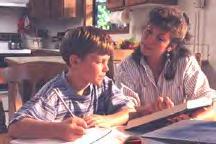Social studies: History and Geography
![]()

Understanding
History and Geography
History Studies
Children should be encourage to place events and objects in chronological order and use
terms and phrases relating to the passing of time [for
example, before, after, a long time ago, past]. In the course of their studies, Children will develop insight as to why people did things, why events happened,
what happened as a result and compare differences between ways of
life at different times. Parents need to guide children with their studies of the past, using a range of sources of
information (for example, stories, eye-witness accounts, pictures and
photographs, artifacts, historic buildings and visits to museums, galleries and
sites).
History Studies include:
* Changes in their own lives and the way of life of their family or others
around them
* The way of life of people in the more distant past who lived in the
local area or elsewhere in the United States.
* The lives of important men, women and children drawn from the history
of the U.S. and the world (for example, artists, engineers, explorers,
inventors, pioneers, rulers, saints, scientists)
Geography Studies
Children will use their newly learned skills when
developing knowledge and understanding of places, patterns and processes, and
environmental change.
* Children should be encouraged to ask geographical questions (for
example, What is it like to live in this place?')
* Observe and record [for example, identify buildings in the street and
complete a chart]
* Express their own views about people, places and environments.
* Communicate in different ways [for example, in pictures, speech,
writing].
* Using geographical vocabulary [for example, hill, river, motorway, near,
far, north, south]
* Use fieldwork skills [for example, recording information on a
local area map]
* Using globes, maps and plans at a range of scales [for example, following
a route on a map]
* Using secondary sources of information [for example, CD-ROMs, pictures,
photographs, stories, information texts, videos, artifacts]
* Making maps and plans [for example, a pictorial map of a place in a
story]
* Identify and describe what places are like [for example, in terms of
landscape, jobs, weather]
* Identify and describe where places are [for example, position on a map,
whether they are on a river]
* Recognize how places have become the way they are and how they are
changing [for example, the quality of the environment in a street]
* Recognize how places compare with other places [for example, compare the local
area with places elsewhere in the United States]
* Recognize how places are linked to other places in the world [for example,
food from other countries].
![]()
Anthropology Art Cooking skills Exercise skills Foreign languages Geography-History
Language Mathematics Music Science Technology Who we Are HOME